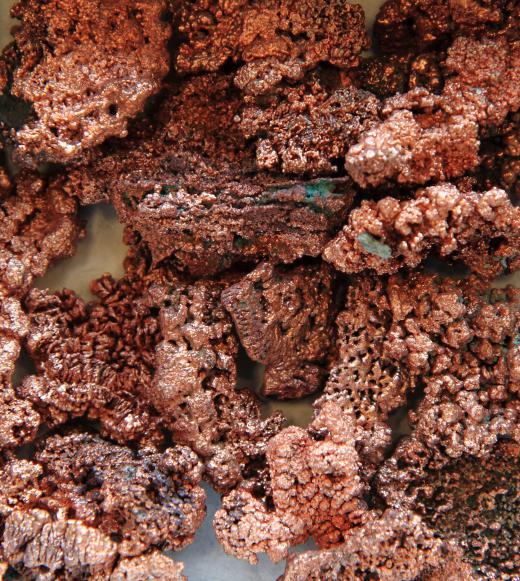A brassmill is an industrial facility that produces brass and alloys of brass and other metals. Brass is an alloy of copper and zinc, and has been used for thousands of years to make everything from religious artifacts to building materials. It looks like gold, yet is generally much cheaper, making brass a popular option for decorative materials and jewelry. It is also strong, yet malleable, and is widely used to make fasteners and wind instruments. These many markets for brass have led to high demand for brassmills throughout the world.
Brass is often mentioned in early historical texts, yet little was known about brass production at this time. It wasn't until the Roman empire that craftsmen first used science to produce brass. During this period, workers used large open-topped containers to melt copper and zinc ore together in a process known as cementation. By the Medieval period, brassmills started to add powdered calamine and charcoal to the zinc and copper ore mixture to produce better quality brass. This calamine brass process remained in use for centuries, and was not completely abandoned until the 19th century.

During the 18th century, brassmills began to melt zinc ore to create zinc metal before combining it with the copper. This technique, which also relied on speltering in a closed furnace, represents the birth of modern brass making. This form of production resulted in superior brass products, and began to replace earlier cementation processes. Areas rich in natural copper, particularly England, became popular locations for new brassmill facilities.
In a modern brassmill, workers rely on several types of industrial equipment to produce and refine brass alloys. These companies process copper and zinc ore in large furnaces to create metal, then blend them together using special alloying techniques. The finished brass may be subject to rolling or further refinement to form in to into sheets, plates, rods or pellets.
A brassmill may produce many different types of brass, or focus on simple alloys. Yellow brass is one of the most common blends, and contains a mix of 33 percent zinc with 67 percent copper. To make naval brass, the brass mill uses an even greater percentage of zinc, with a small amount of tin added. This gives the brass added protection against corrosion and wear. Manganese brass alloys are often used to make gold coins, while leaded brass provides a high degree of machinability for use in manufacturing.
The majority of brass alloys in use today are recycled to help reduce demand for raw copper and zinc supplies. A brassmill that produces new brass may also recycle old materials to cut material costs. These mills use a magnet to separate out other materials from the non-magnetic brass scrap. They then melt the brass scrap and form it into small pellets, which are then sold or reused for other purposes.
